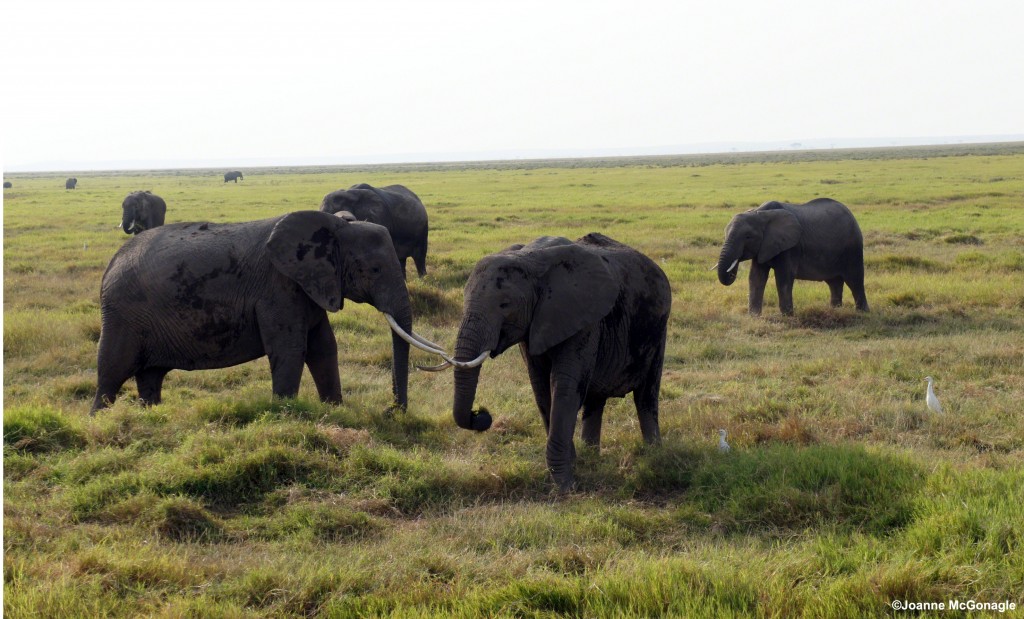
Elephants in Amboseli National Park
Did you know that an elephant is murdered every 15 minutes for their tusks?
As long as there is a demand for ivory, elephants will be killed for their tusks. Today, it is estimated up to 36,000 elephants are killed each year, that is one life lost every 15 minutes. At this rate, the African elephant could be extinct from the wild by 2025.
Did you know elephants are killed for their tusks?
I thought everyone knew this, but I was wrong. I began asking people if they knew about the elephant poaching crisis. You know, when there is a break in conversation at dinner with friends or I need to change the subject from the presidential campaign chatter, and was shocked to find out that most did not know the dire situation for the elephants and many did not know elephants are killed for their tusks. They assumed the tusks were harvested without harm to the elephant. The one thing without exception, people love elephants.
I thought you might talk about the elephant with your friends and family too. Tell them why we need elephants in addition to the fact that they are an iconic beloved species. Tell them elephants share the same emotions and cognitive behavior as us. They grieve for their lost loved ones, they feel fear, joy and empathy and are highly intelligent.
Other animals, plants and entire ecosystems need elephants for their survival. Elephants are “nature’s gardeners” because plants and trees rely on elephants to disperse their seeds far and wide through their dung. Uprooting trees to feed, elephants control the tree populations so grasses can thrive to sustain wildebeests, zebra and more. Their large footprints collect water creating a water source for smaller animals.
The Ivory Trade
In the early 1970’s, demand for ivory rocketed with 80% of traded raw ivory coming from poached elephants. In 1989 CITES (Convention on International Trade in Endangered Species of Wild Fauna and Flora) put in place a ban prohibiting all international trade of ivory. Major ivory markets were eliminated and some countries in Africa experienced a steep decline in illegal killing allowing elephant populations to recover.
A ‘one-off- sale” in 2008 sparked the illegal trade and 2011 saw the largest seizures of ivory since records began. Elephant populations declined rapidly as poaching escalated across Africa, fueling the black market.
The Ivory Burn in Kenya on April 30
On April 30, Kenyan President Uhuru Kenyatta will set fire to 105 tons of ivory in Nairobi National Park. Burning its entire ivory stockpile sends out the message that Kenya will never benefit from illegal ivory captured from poachers or seized in transit.

Image courtesy of The Elephant Movie #worthmorealive
Elephants are Worth More Alive
Some argue burning the ivory is a waste, stating that ivory is valuable and should be sold and use the proceeds to fund wildlife conservation or support local development initiatives. But, this misinterprets the purpose of the ivory burn. This isn’t about burning ivory at all, it is about saving elephants.
Burning the stockpiles is part of a wider conservation strategy to eliminate demand for ivory and put value instead on living elephants. Elephants are worth more alive.
The only way thought leaders in elephant conservation think to save African elephants is to remove ivory altogether from the market. This is a much needed political solution, not an economic one. There are two ways to do this: 1- attach a stigma to buying the product, and 2- make it illegal. This approach has been met with some success to shut down the trade in whale products and animal furs.
The ivory burn is a highly visible political statement of intent. The burn will raise awareness of the issues, stigmatizing the purchase of ivory and strengthening the global support for a total trade ban.
When criticized the ivory burn is a publicity stunt, Paula Kahumbu, a leader in elephant conservation stated, ” To raise awareness guess what … we need publicity. Imagine if Kenya quietly destroyed the Ivory away from the public eyes and got no publicity. The world would NEVER believe us.”
Would you believe if you didn’t see the piles of tusks in the image above?
Kahumbu passionately said, ” It is the message that counts .. this historic burn has already revealed the scale of the elephant slaughter so graphically. We cannot help feeling the gravity and sadness. Burning these tusks sends a message of shame to those who dare to buy, give, wear or use ivory or rhino horn. The public should shun these people, label them, they are despicable. The burn will harvest a global stigma against ivory. We heard that Chinese people will be moved by it. Let’s spread this message and keep spreading it until the elephants are safe.”
Will you help spread this message too?
should have sold it. It was worth 150 million dollars. The people there must have $hit for brains.
I’m shocked humans don’t realize elephants die for ivory. My human was taught that at a very young age – and her family looked down on it.
I can’t believe people don’t know. Ths is beyond belief and words like heads in the sand come to mind. BUT it is up to us to educate, to spread the word. So off we go to share!!